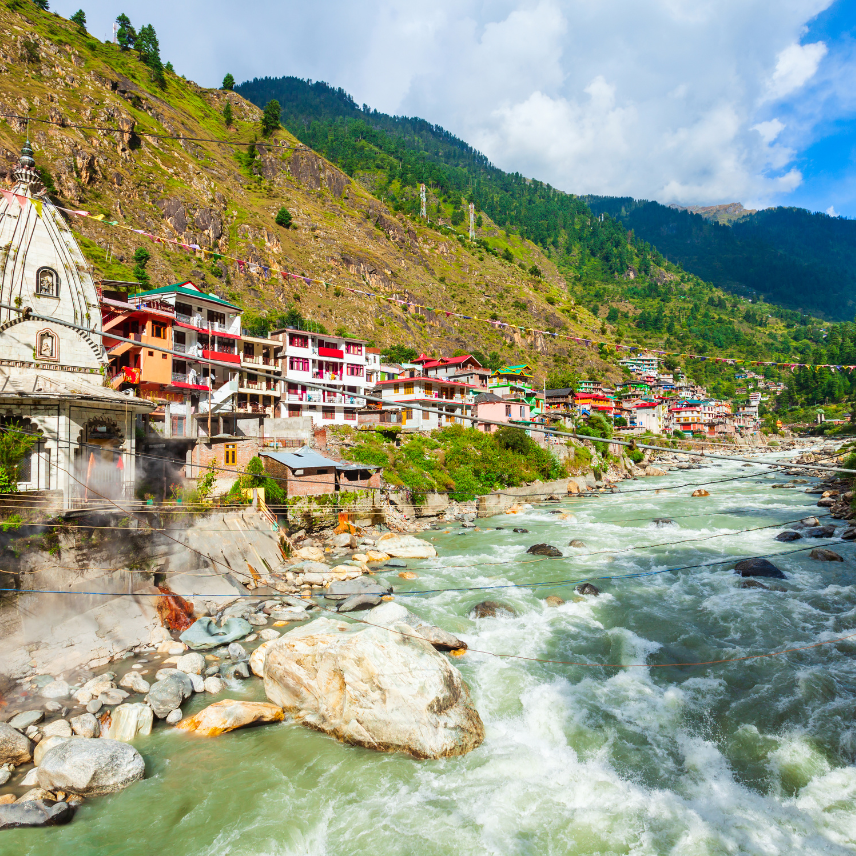Perched at a staggering altitude of 15,200 feet in the Garhwal Himalayas, Hemkund Sahib is one of the most revered pilgrimage sites for Sikhs. Nestled amidst snow-covered peaks, this sacred Gurudwara is not just a place of religious significance but also a symbol of serenity, peace, and spiritual enlightenment.
The Spiritual Significance of Hemkund Sahib
Hemkund Sahib, meaning "Lake of Snow," holds deep spiritual significance in Sikhism. This sacred site is dedicated to the tenth Sikh Guru, Guru Gobind Singh Ji, who is believed to have meditated at this very location in his previous incarnation. The Guru's meditative experience here is said to have been so profound that it influenced his future role as a spiritual leader and warrior.
The Gurudwara stands beside a pristine glacial lake, Hemkund, which mirrors the surrounding seven snow-capped peaks, each symbolizing the profound connection between nature and spirituality. The lake is considered holy, and many pilgrims take a dip in its icy waters as an act of purification and devotion, despite the freezing temperatures.
The Unique Architecture of Hemkund Sahib
The architecture of Hemkund Sahib is as unique as its location. Unlike the traditional domed structures of most Gurudwaras, Hemkund Sahib has a distinctive star-shaped design, which complements the rugged mountain terrain. The Gurudwara is constructed using concrete and stones to withstand the harsh weather conditions, with a roof designed to bear the weight of heavy snowfall.
Inside the Gurudwara, the atmosphere is filled with the peaceful chanting of Gurbani (Sikh hymns), offering a tranquil space for meditation and reflection. The presence of devotees from all walks of life, coming together in this remote and challenging environment, adds to the spiritual aura of the place.
The Journey to Hemkund Sahib
Reaching Hemkund Sahib is a pilgrimage in the truest sense, involving an arduous but spiritually rewarding trek. The journey begins from Govindghat, a small town situated on the Rishikesh-Badrinath highway. From here, pilgrims undertake a 13-kilometer trek to Ghangaria, the base camp for Hemkund Sahib.
The final leg of the journey is a steep 6-kilometer climb from Ghangaria to Hemkund Sahib. The trek is challenging, with narrow, winding paths, unpredictable weather, and a significant altitude gain. However, the stunning vistas of cascading waterfalls, lush valleys, and towering mountains make the effort worthwhile.
As one ascends, the landscape changes dramatically, with the greenery giving way to a more barren, rocky terrain, eventually leading to the snow-clad peaks that surround Hemkund Sahib. The sense of accomplishment upon reaching the Gurudwara, coupled with the spiritual energy that pervades the area, makes this trek a transformative experience.
Best Time to Visit Hemkund Sahib
Due to its high altitude and harsh weather conditions, Hemkund Sahib is accessible only for a few months each year, typically from late May to early October. During these months, the snow melts enough to clear the paths, and the weather, though still chilly, is more conducive for trekking.
The peak pilgrimage season is between June and September when the trails are most passable, and the surrounding landscape is lush and vibrant. However, visitors should be prepared for sudden weather changes and should carry adequate warm clothing and trekking gear.
Conclusion: A Sacred Retreat in the Lap of the Himalayas
Hemkund Sahib is more than just a pilgrimage site; it is a testament to the enduring spirit of devotion and faith. The journey to this remote Gurudwara, surrounded by the majestic Himalayas, is a pilgrimage of the heart and soul. It offers not only the opportunity to connect with the divine but also a chance to experience the raw beauty of nature at its most awe-inspiring.
For those who undertake this journey, Hemkund Sahib is not just a destination but a spiritual milestone, a place where the physical and the metaphysical converge, leaving an indelible mark on the pilgrim's soul.



